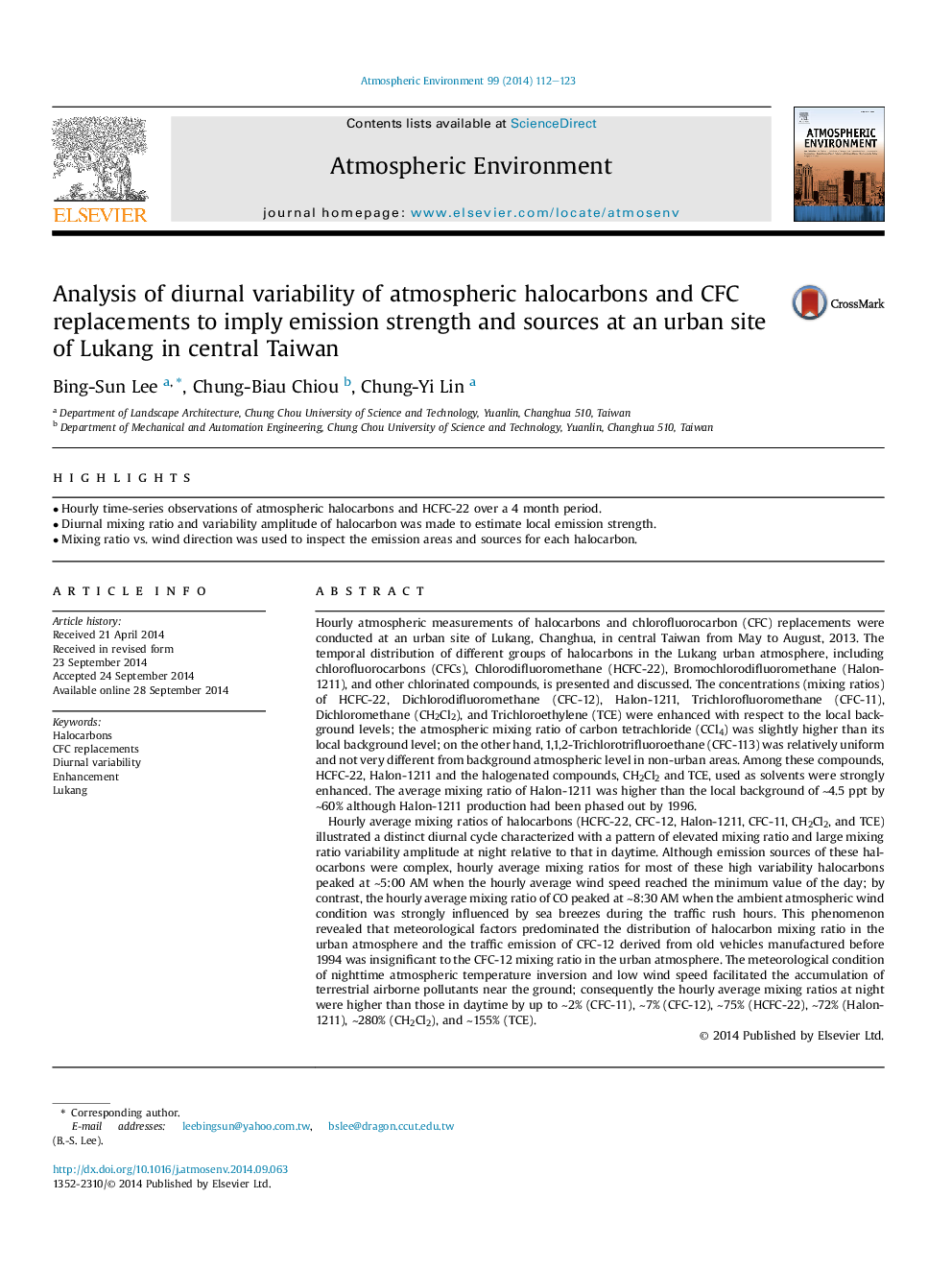| Article ID | Journal | Published Year | Pages | File Type |
|---|---|---|---|---|
| 6339105 | Atmospheric Environment | 2014 | 12 Pages |
Abstract
Hourly average mixing ratios of halocarbons (HCFC-22, CFC-12, Halon-1211, CFC-11, CH2Cl2, and TCE) illustrated a distinct diurnal cycle characterized with a pattern of elevated mixing ratio and large mixing ratio variability amplitude at night relative to that in daytime. Although emission sources of these halocarbons were complex, hourly average mixing ratios for most of these high variability halocarbons peaked at â¼5:00 AM when the hourly average wind speed reached the minimum value of the day; by contrast, the hourly average mixing ratio of CO peaked at â¼8:30 AM when the ambient atmospheric wind condition was strongly influenced by sea breezes during the traffic rush hours. This phenomenon revealed that meteorological factors predominated the distribution of halocarbon mixing ratio in the urban atmosphere and the traffic emission of CFC-12 derived from old vehicles manufactured before 1994 was insignificant to the CFC-12 mixing ratio in the urban atmosphere. The meteorological condition of nighttime atmospheric temperature inversion and low wind speed facilitated the accumulation of terrestrial airborne pollutants near the ground; consequently the hourly average mixing ratios at night were higher than those in daytime by up to â¼2% (CFC-11), â¼7% (CFC-12), â¼75% (HCFC-22), â¼72% (Halon-1211), â¼280% (CH2Cl2), and â¼155% (TCE).
Related Topics
Physical Sciences and Engineering
Earth and Planetary Sciences
Atmospheric Science
Authors
Bing-Sun Lee, Chung-Biau Chiou, Chung-Yi Lin,
